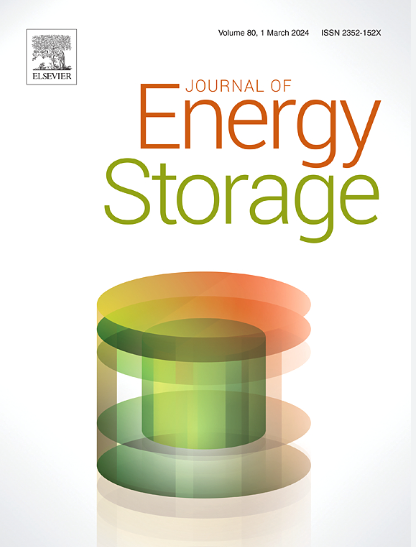Thermodynamic performance analysis of a triplex-tube latent heat thermal energy storage unit with actively rotating central tube: A comparative study of fin geometries
IF 8.9
2区 工程技术
Q1 ENERGY & FUELS
引用次数: 0
Abstract
This study aims to enhance the application of active rotation in phase change heat storage by conducting numerical simulations on a horizontal triplex-tube latent heat thermal energy storage unit integrated with rectangular fins, fractal fins, Y-fins, V-fins, and T-fins. It analyzes the impact of different fin shapes on the thermodynamic performance under various rotation speeds. The results demonstrate that the novel active rotation technology plays a significant role. At a rotation speed of 2 rps, the melting time is shortened by 59.09 % compared to the stationary model, with a total heat loss of merely 3.73 %. Under the condition of dynamic rotation and at a rotation speed of 2 rps, the melting time of the rectangular fin is reduced by 75 % to 27.5 min, while that of the V-fin is only 27.5 min, which is 6.91 % faster than that of the rectangular fin, indicating a substantial reduction in the melting time. At this moment, the average heat transfer rate of the V-fin model reaches 2217.65 W, and the heat absorption during complete melting is 3406.313 kJ, which is 0.464 % lower than that of the T-fin. Although the heat absorption of the V-fin is somewhat decreased, its efficiency is significantly improved, sufficient to compensate for the energy consumption. Moreover, it has been found that the optimal arrangement of fins should be capable of improving the heat conduction in both the longitudinal and transverse directions and can be effectively integrated with the active rotation technology. These results provide significant insights for enhancing the construction of thermal energy storage systems via the use of the active rotation mechanism.
求助全文
约1分钟内获得全文
求助全文
来源期刊

Journal of energy storage
Energy-Renewable Energy, Sustainability and the Environment
CiteScore
11.80
自引率
24.50%
发文量
2262
审稿时长
69 days
期刊介绍:
Journal of energy storage focusses on all aspects of energy storage, in particular systems integration, electric grid integration, modelling and analysis, novel energy storage technologies, sizing and management strategies, business models for operation of storage systems and energy storage developments worldwide.
 求助内容:
求助内容: 应助结果提醒方式:
应助结果提醒方式:


